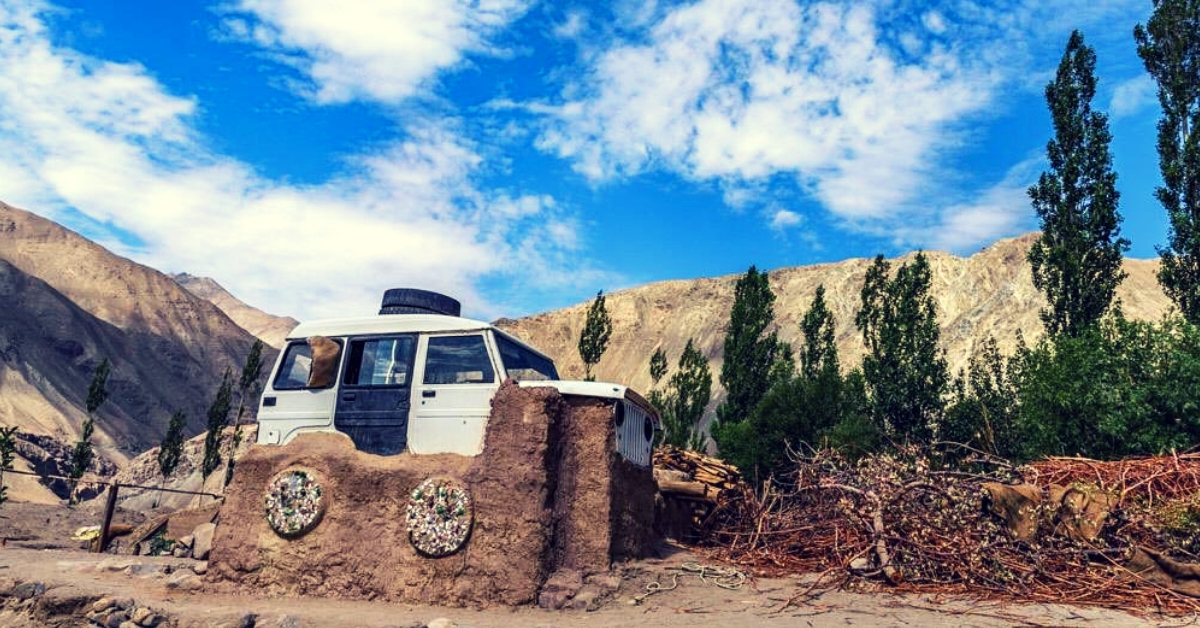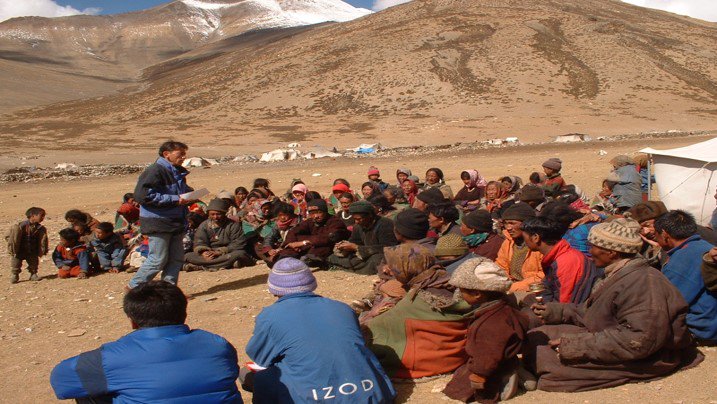Saw the Viral ‘Roof-With-A-Jeep’ Pic? It Once Helped Revolutionize Education in Ladakh!
"Dear Mr @anandmahindra, the Jeep you tweeted has a lovely story. It served us faithfully between 1997 to 2007 before taking new avatara", tweeted Sonam Wangchuk.

In an interesting exchange on Twitter, Sonam Wangchuk, the Ladakhi engineer, innovator and educator, told Anand Mahindra, Chairman of the Mahindra Group, about the fascinating story behind the Mahindra Jeep that was recently converted into a home roof at the Himalayan Institute of Alternatives (HIAL).
Earlier this week, Anand Mahindra had posted a series of photos appreciating the efforts of Wangchuk’s HIAL in not throwing the jeep into the scrap yard, but recycling it.
“A way of life at the Institute, where nothing gets discarded. Well, this will compete with our auto-shredding venture, but it’s far more creative!” said Anand Mahindra on Twitter.
In response, Wangchuk told Anand Mahindra about the “lovely story” behind the jeep.
Dear Mr @anandmahindra the Jeep you tweeted has a lovely story. It was instrumental in educational campaigns in the remotest frontiers of Ladakh… which finally took the matriculation results from 5% to 75%. It served us faithfully between 1997 to 2007 before taking new avatara. pic.twitter.com/N9ejsphOjQ
— Sonam Wangchuk (@Wangchuk66) December 17, 2018
In an earlier story on the HIAL, The Better India gave a brief lowdown on how the Students’ Educational and Cultural Movement of Ladakh (SECMOL), a leading innovator in the education sector founded by Wangchuk, alongside the State government and local communities transformed the face of school education in India.
The state of school education in Ladakh through the 1980s and the early parts of the following decade was dire, to say the least.

As Wangchuk had himself said, “Twenty-five years ago, when I was finishing my own engineering degree, I saw that schools were a pain for everyone, but for mountain children, it was doubly painful and irrelevant. Children who spoke Ladakhi or Tibetan at home were made to sit all day memorising study material in alien languages like Urdu or English. What’s the point of learning ‘F for fans, S for ships, and T for trains’ in a high-altitude cold desert?”

In the article on HIAL, The Better India goes onto report,
“Until the mid-90s, nearly 95% of the students would fail their class X examinations.
Exasperated with the system, Sonam Wangchuk and some like-minded friends decided to do something about it and founded SECMOL in 1988. Under Operation New Hope, which was a collaborative effort by the State government, village communities and civil society to reform the government school system in Ladakh in 1994, SECMOL instigated the process of reformulating the curriculum and retraining teachers. In addition to other measures by the local administration, this initiative helped increase the pass percentage from 5% in 1996 to 75% in 2015.
However, for those who continued to struggle with the conventional education model, SECMOL started an alternative school, where students “learn by doing things” instead of limiting themselves to the confines of textbooks written by people “who have never set foot in Ladakh, and know nothing about growing barely at 12,000 feet or about making houses out of sun-dried bricks,” as Helena Norberg-Hodge (a leading Swedish sociologist and expert on Ladakh) notes. The emphasis here is on real learning, “where they engage in various innovations to solve real-life problems.”

The discarded jeep now converted into a home roof is an abiding legacy of those efforts. There could be no better tribute to the Ladakhi people’s innovative efforts in revolutionising local school education than recycling the jeep that helped them get there.
(Edited by Gayatri Mishra)
Like this story? Or have something to share? Write to us: [email protected], or connect with us on Facebook and Twitter.
If you found our stories insightful, informative, or even just enjoyable, we invite you to consider making a voluntary payment to support the work we do at The Better India. Your contribution helps us continue producing quality content that educates, inspires, and drives positive change.
Choose one of the payment options below for your contribution-
By paying for the stories you value, you directly contribute to sustaining our efforts focused on making a difference in the world. Together, let’s ensure that impactful stories continue to be told and shared, enriching lives and communities alike.
Thank you for your support. Here are some frequently asked questions you might find helpful to know why you are contributing?


This story made me
-
97
-
121
-
89
-
167













